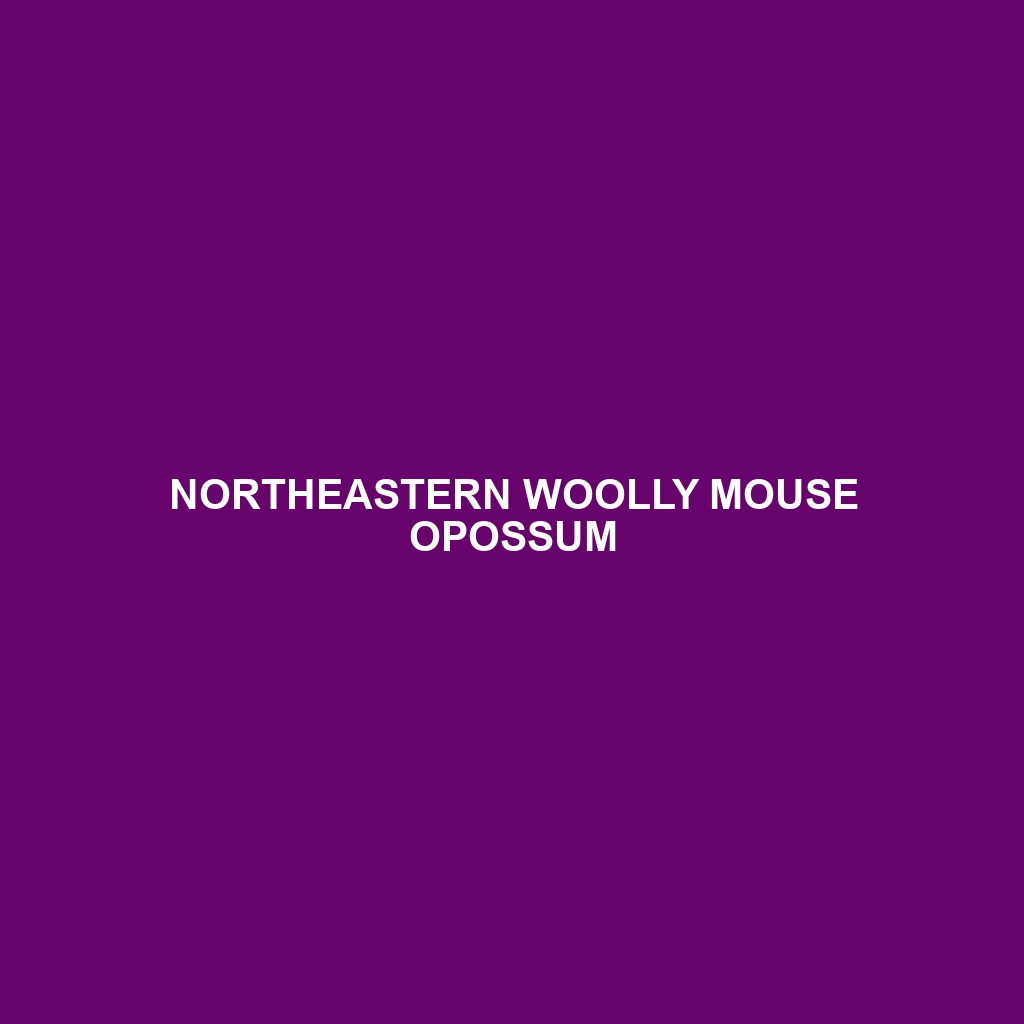Northeastern Woolly Mouse Opossum: A Comprehensive Overview
The Northeastern Woolly Mouse Opossum (Marmosa demerarae) is a small, nocturnal marsupial native to the tropical and subtropical forests of northeastern South America. Named for its soft, woolly fur and mouse-like appearance, this elusive creature plays a crucial role in its ecosystem. Despite its modest size, the Northeastern Woolly Mouse Opossum is a resilient and adaptable mammal displaying a range of fascinating behaviors and physical characteristics.
Physical Characteristics:
Size: Adults typically measure between 10 to 15 centimeters in body length, with an additional tail length of 13 to 20 centimeters. They weigh around 30 to 50 grams.
Coloration: Their fur is predominantly grey to brown on the dorsal side, with lighter, cream-colored or white fur on the ventral side. The tail often has a bi-colored appearance with a darker base and lighter tip.
Special Features: They possess large, rounded ears and a pointed snout, enhancing their acute sense of hearing and smell. Their tail is prehensile, aiding in climbing and balancing in their arboreal habitat. Additionally, their woolly fur provides insulation against the varying temperatures of their environment.
Behavior:
Social Interactions: Northeastern Woolly Mouse Opossums are largely solitary animals. They are known to be territorial and exhibit aggressive behaviors when their space is encroached upon by intruders.
Feeding Habits: These opossums are omnivorous, with a diet consisting of insects, small vertebrates, fruits, and nectar. They play a vital role in seed dispersal and pollination due to their feeding habits.
Ecological Roles: As both predator and prey, they help control insect populations and provide a food source for larger predators. Their interaction with plants through pollination and seed dispersal supports the maintenance of their forest habitat.
Habitats:
The Northeastern Woolly Mouse Opossum inhabits the dense, humid forests of northeastern South America, including countries like Brazil, Guyana, Suriname, and French Guiana. They prefer lowland tropical rainforests but can also be found in secondary forests and disturbed areas.
Adaptations:
Arboreal Lifestyle: Their prehensile tail and sharp claws are perfectly adapted for a life spent navigating trees. The woolly fur not only offers warmth but also aids in camouflage among the foliage.
Nocturnal Activity: Being nocturnal helps them avoid many predators and take advantage of nighttime insect activity.
Reproductive Strategy: Females have a pouch where they carry and nurse their young, ensuring their offspring are protected and provided for during the vulnerable early stages of life.
Conservation Status:
Currently, the Northeastern Woolly Mouse Opossum is not considered endangered, falling under the “Least Concern” category on the IUCN Red List. However, habitat destruction and deforestation pose potential threats to their populations. Conservation efforts focus on preserving their natural habitats and mitigating the impact of human activities.
Fun Facts:
Nectar Lovers: These opossums are known to feed on the nectar of various flowers, making them important pollinators in their ecosystem.
Agile Climbers: Their tail can support their entire body weight, allowing them to hang upside down while feeding or resting.
Quick Reproduction: They have a relatively short gestation period, followed by a brief but intensive period of nursing, enabling them to adapt quickly to changing environmental conditions.
The Northeastern Woolly Mouse Opossum, with its unique adaptations and ecological importance, is a remarkable example of the biodiversity within South America’s tropical forests. Understanding and appreciating their role in the ecosystem helps underscore the importance of conservation efforts to protect these and many other species.
